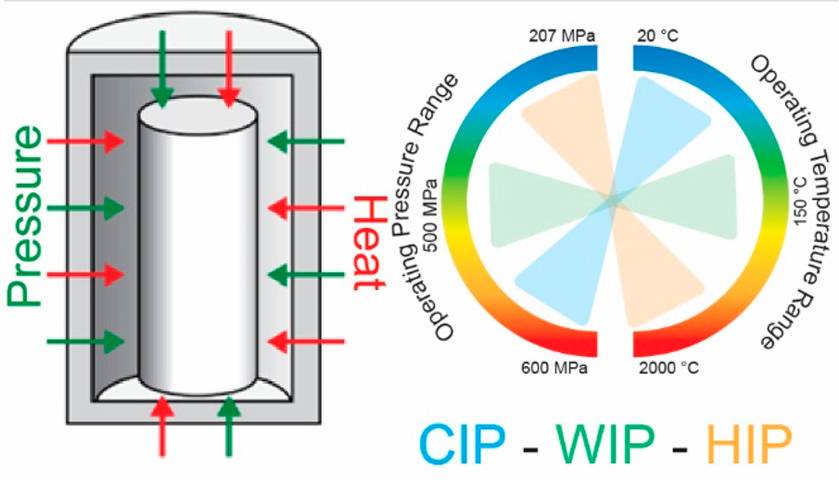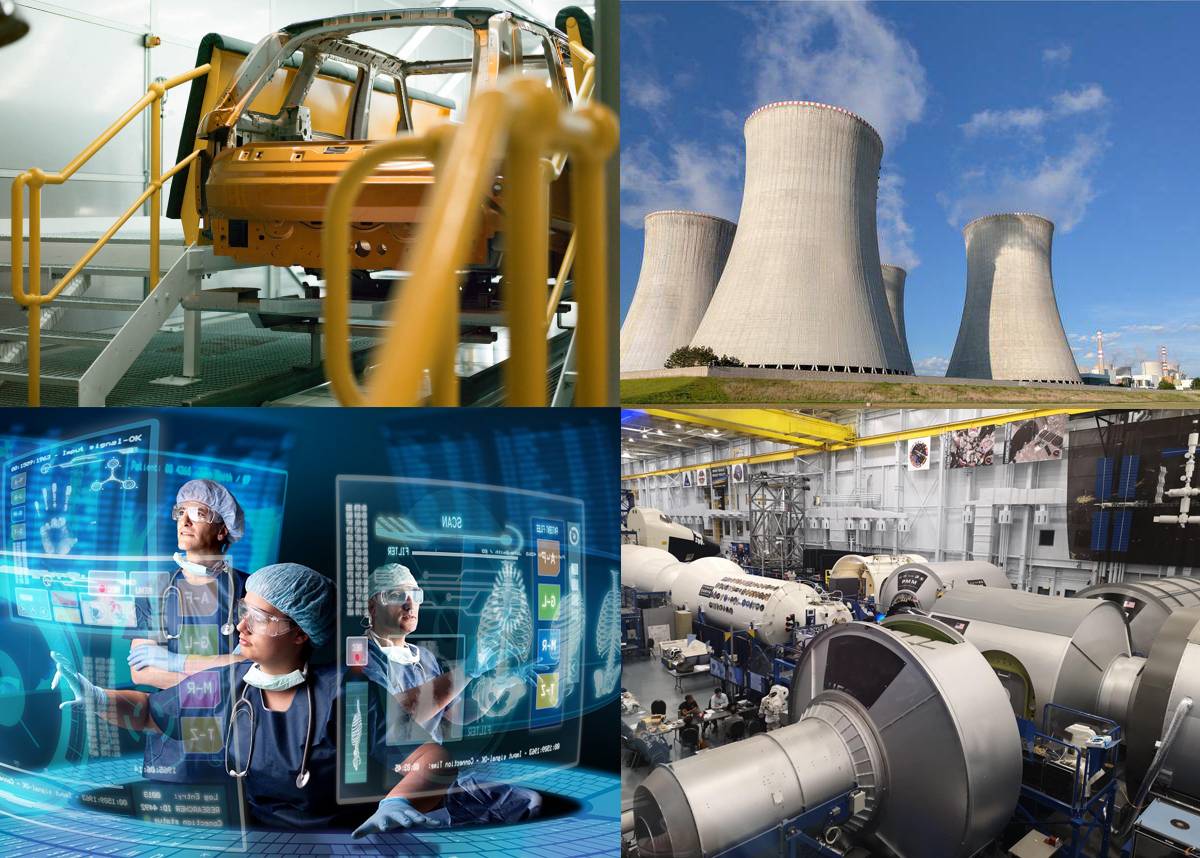Introduction to Warm Isostatic Pressing
Warm Isostatic Pressing (WIP) is a process used to improve the quality of materials by applying high pressure and temperature. WIP is used to improve the density, mechanical properties, and microstructure of materials. During the process, a material is placed in a pressure vessel and subjected to high pressure and temperature. The pressure is applied uniformly in all directions, and the temperature is maintained at a level that is just below the melting point of the material. This process is useful in a variety of industries such as aerospace, medical, and defense. WIP is an essential process that facilitates the production of high-quality materials with improved properties and characteristics.
Table of Contents
How Does Warm Isostatic Pressing Work?
Warm Isostatic Pressing (WIP) is an effective manufacturing process that applies high pressure and temperature to materials in a sealed container to produce high-performance components. The process is widely used in various industries, including aerospace, medical, and energy, to produce complex components that are difficult to shape using traditional manufacturing methods. Here’s a step-by-step explanation of how the WIP process works:

Step 1: Placing the Material Inside a Sealed Container
The process of WIP begins with placing the material to be treated inside a sealed container. The container is typically made of a flexible material such as rubber and is designed to withstand high pressure and temperature.
Step 2: Filling the Container with Pressurized Gas
The sealed container is then filled with a pressurized gas, such as argon or nitrogen, which acts as the pressure medium. The gas is pressurized to a specified level, depending on the material and the desired outcome.
Step 3: Heating the Container
The container is then heated to a predetermined temperature using a temperature controller. The temperature is usually below the boiling point of the liquid medium used in the process.
Step 4: Applying Pressure to the Material
Using a hydraulic press, the container is subjected to high pressure, causing the material to deform plastically. The high pressure and temperature act together to eliminate voids and internal defects in the material, resulting in densification.
Step 5: Cooling the Container
After the material has been treated, the container is cooled down to room temperature. The cooling process is slow to prevent thermal shock, which can cause cracking and other defects in the material.
Step 6: Removing the Material
Once the container has cooled down, the material is removed, and the finished component is ready for further processing or use.
In conclusion, the WIP process is a highly effective manufacturing process that involves the application of high pressure and temperature to materials in a sealed container. By following the above steps, the WIP process can produce components with high density, uniformity, and strength. The specialized equipment used for WIP requires skilled operators to ensure safe and effective operation.
Benefits of Warm Isostatic Pressing
Warm Isostatic Pressing (WIP) offers several benefits over other manufacturing processes. In this section, we will discuss the key advantages of WIP.

Improved Strength and Uniformity
WIP is used to improve the strength and uniformity of materials like ceramics, composites, and metals. During the process, the material is subjected to high pressure from all directions, resulting in uniform compaction of the material. This results in a material with improved strength and uniformity, which is particularly useful for materials that are difficult to shape or have complex geometries.
Reduced Material Waste and Production Costs
WIP can reduce material waste and production costs by allowing for the creation of complex shapes and reducing the need for additional processing steps. The process can also eliminate the need for machining and welding, which can save time and money.
Improved Properties of Materials
WIP can improve the properties of materials that are susceptible to cracking or other defects during traditional manufacturing processes. The high-pressure environment of WIP can help to eliminate voids and other defects, resulting in a more uniform and defect-free material.
Applicable to a Wide Range of Materials
WIP is useful for a wide range of materials, including ceramics, composites, and metals. The process is particularly useful for materials that are difficult to shape or have complex geometries.
Increased Production Efficiency
WIP equipment is designed to improve production efficiency. The equipment typically consists of a pressure vessel, a heating element, and a control system. This allows for precise control of the process, which can improve production efficiency and reduce production time.
Improved Quality of End Products
The benefits of WIP ultimately lead to improved quality of end products. The process can produce materials with improved strength, uniformity, and density. This can lead to improved performance and longer product lifetimes.
In conclusion, Warm Isostatic Pressing is a valuable tool for improving the quality and properties of materials used in a wide range of industries. The process offers several benefits over other manufacturing processes, including improved strength and uniformity, reduced material waste and production costs, improved properties of materials, applicability to a wide range of materials, increased production efficiency, and improved quality of end products.
Applications of Warm Isostatic Pressing
Warm Isostatic Pressing (WIP) has a wide range of applications in various industries, including aerospace, automotive, and medical. The process is commonly used to manufacture high-performance aerospace components, such as turbine blades, that require superior mechanical properties. WIP is also used to improve the mechanical properties of medical implants, such as hip replacements, which need to withstand significant stress and strain. In this section, we will discuss some of the major applications of WIP in various industries.

Aerospace Industry
WIP is commonly used in the aerospace industry to manufacture high-performance components that require superior mechanical properties. The process is used to manufacture turbine blades, compressor blades, and other components that must withstand high temperatures and pressures. The WIP process can improve the mechanical properties of these components, making them more durable and reliable.
Automotive Industry
WIP is also used in the automotive industry to improve the mechanical properties of engine components, such as pistons and connecting rods. The process can improve the strength and toughness of these components, making them more durable and reliable. WIP is also used to manufacture parts for racing cars, such as gears and drive shafts, that require superior mechanical properties.
Medical Industry
WIP is commonly used in the medical industry to improve the mechanical properties of medical implants, such as hip and knee replacements. The process can improve the strength and toughness of these implants, making them more durable and reliable. WIP is also used to manufacture dental implants, spinal implants, and other medical devices that require superior mechanical properties.
Nuclear Industry
WIP is also used in the nuclear industry to manufacture components for nuclear reactors, such as fuel rods and control rods. The process can improve the mechanical properties of these components, making them more durable and reliable. WIP is also used to manufacture high-performance materials for use in nuclear fusion reactors.

Other Industries
WIP is also used in other industries, such as the oil and gas industry, to manufacture high-performance components that require superior mechanical properties. The process can improve the strength and toughness of these components, making them more durable and reliable. WIP is also used to manufacture parts for heavy machinery, such as gears and bearings, that require superior mechanical properties.
In conclusion, Warm Isostatic Pressing (WIP) has a wide range of applications in various industries, including aerospace, automotive, medical, and nuclear. The process is commonly used to manufacture high-performance components that require superior mechanical properties. WIP can improve the strength and toughness of these components, making them more durable and reliable. With its ability to improve the mechanical properties of materials, WIP is a critical process in the manufacturing of high-performance components and devices.
Conclusion
In conclusion, Warm Isostatic Pressing is a reliable process for producing high-quality metal parts. The process applies uniform pressure and temperature to the metal powder, which results in parts with excellent density and isotropic properties. The equipment used for Warm Isostatic Pressing can be classified into three types: bolt structure, moment tooth structure, and steel wire winding structure. These types of equipment offer different capabilities and are suitable for different applications. However, regardless of the type of equipment used, Warm Isostatic Pressing offers several benefits, including high precision, repeatability, and the ability to produce complex shapes.
Related Products
- Warm Isostatic Press WIP Workstation 300Mpa for High Pressure Applications
- Warm Isostatic Press for Solid State Battery Research
- Manual Cold Isostatic Pressing Machine CIP Pellet Press
- Cold Isostatic Pressing Machine CIP for Small Workpiece Production 400Mpa
- Electric Lab Cold Isostatic Press CIP Machine for Cold Isostatic Pressing

















